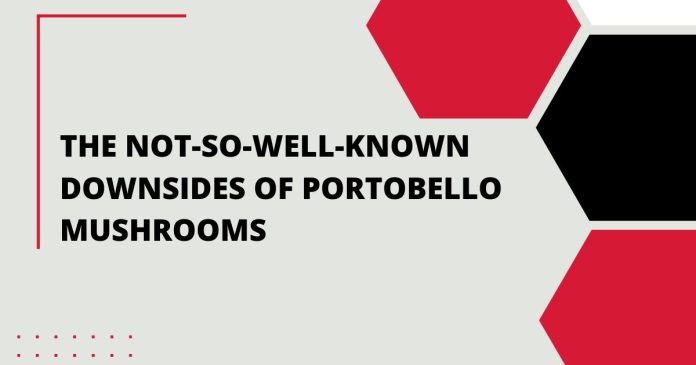Portobello mushrooms, with their meaty texture and earthy flavor, have gained popularity in recent years as a versatile and healthy ingredient. They are often used as a meat substitute in vegetarian dishes and can be grilled, stuffed, or added to various recipes. While they certainly have their merits, it’s essential to understand that like any other food, there are potential drawbacks to consuming portobello mushrooms. In this article, we’ll explore the negative effects of portobello mushrooms and shed light on important considerations for their consumption.
1. High Purine Content
Portobello mushrooms contain a significant amount of purines, which are natural compounds found in many foods. For individuals with gout or those predisposed to it, excessive purine intake can trigger gout attacks, leading to painful joints and discomfort. While moderate consumption might not be problematic for everyone, individuals with a history of gout should exercise caution.
2. Digestive Distress
Some individuals may experience digestive issues after consuming portobello mushrooms. These issues can range from mild bloating and gas to more severe discomfort. The reason behind this lies in the complex carbohydrates present in mushrooms that are not easily digestible for everyone. Cooking the mushrooms thoroughly can mitigate this problem to some extent, but those with sensitive stomachs should be mindful.
3. Allergies and Sensitivities
Although relatively rare, allergies to mushrooms can occur, and portobello mushrooms are no exception. Individuals with a fungal allergy or sensitivity should be cautious when trying these mushrooms for the first time. Symptoms of mushroom allergies can range from mild skin reactions to more severe respiratory issues, making it crucial to pay attention to any adverse reactions.
4. Oxalates
Portobello mushrooms, like many other vegetables, contain oxalates. Oxalates are naturally occurring compounds that, in excessive amounts, can contribute to the formation of kidney stones in susceptible individuals. If you have a history of kidney stones or are prone to developing them, it’s wise to moderate your intake of oxalate-rich foods, including portobello mushrooms.
5. Interaction with Medications
Portobello mushrooms, like some other foods, can interact with certain medications. Particularly, they might interfere with blood-thinning medications or drugs that impact the liver. If you’re on medication, it’s essential to consult your healthcare provider before making significant changes to your diet, including incorporating large amounts of portobello mushrooms.
6. Nutrient Absorption
Excessive consumption of portobello mushrooms might interfere with the absorption of essential nutrients like zinc. These mushrooms contain compounds called chelators, which can bind to minerals and reduce their availability for absorption by the body. While portobello mushrooms are undoubtedly a nutritious food, it’s crucial to maintain a balanced diet to ensure you’re getting all the nutrients you need.
Conclusion
While portobello mushrooms offer a tasty and nutritious addition to various dishes, it’s essential to be aware of the potential negative effects they might have, particularly for individuals with specific health conditions. Moderation, proper cooking, and consultation with healthcare professionals when needed can help you enjoy the benefits of portobello mushrooms while minimizing any potential downsides.
FAQs
- Can I eat portobello mushrooms if I have gout? It’s best to consult with a healthcare provider. Moderate consumption might be okay for some individuals, but those with a history of gout should exercise caution.
- Do portobello mushrooms cause kidney stones? While they contain oxalates, the risk of kidney stones from portobello mushrooms is relatively low, especially if consumed in moderation. If you have a history of kidney stones, it’s wise to consult your doctor.
- Are there any alternative mushrooms with fewer side effects? Some people find that milder mushroom varieties, such as white button mushrooms, cause fewer digestive issues. Experimenting with different types might be beneficial.
- Can children safely eat portobello mushrooms? Generally, yes, but moderation is key. If your child has allergies or digestive sensitivities, it’s essential to be cautious and monitor their reaction.
- Are there any benefits to cooking portobello mushrooms differently to reduce potential side effects? Yes, thoroughly cooking portobello mushrooms can break down complex carbohydrates and make them easier to digest. It’s a good practice for those with sensitive stomachs.

